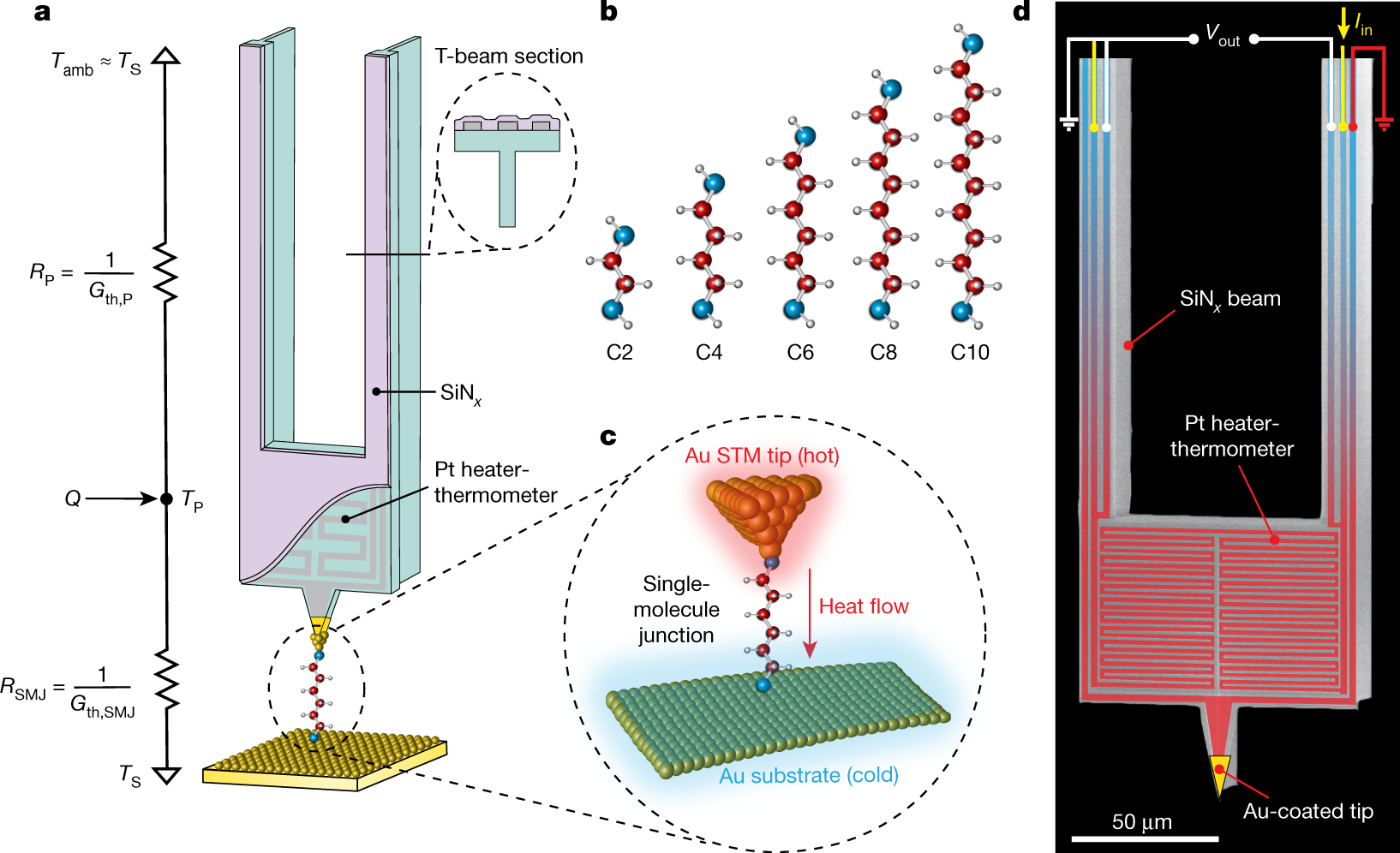
Project A08: Nature 2019
Thermal conductance of single-molecule junctions
Single-molecule junctions have been extensively used to probe properties as diverse as electrical conduction1,2,3, light emission4, thermoelectric energy conversion5,6, quantum interference7,8, heat dissipation9,10 and electronic noise11 at atomic and molecular scales. However, a key quantity of current interest—the thermal conductance of single-molecule junctions—has not yet been directly experimentally determined, owing to the challenge of detecting minute heat currents at the picowatt level. Here we show that picowatt-resolution scanning probes previously developed to study the thermal conductance of single-metal-atom junctions12, when used in conjunction with a time-averaging measurement scheme to increase the signal-to-noise ratio, also allow quantification of the much lower thermal conductance of single-molecule junctions. Our experiments on prototypical Au–alkanedithiol–Au junctions containing two to ten carbon atoms confirm that thermal conductance is to a first approximation independent of molecular length, consistent with detailed ab initio simulations. We anticipate that our approach will enable systematic exploration of thermal transport in many other one-dimensional systems, such as short molecules and polymer chains, for which computational predictions of thermal conductance13,14,15,16 have remained experimentally inaccessible.
L. Cui, S. Hur, Z. A. Akbar, J. C. Klöckner, W. Jeong, F. Pauly, S.-Y. Jang, P. Reddy, and E. Meyhofer
Nature 572, 628–633 (2019)
DOI: 10.1038/s41586-019-1420-z
